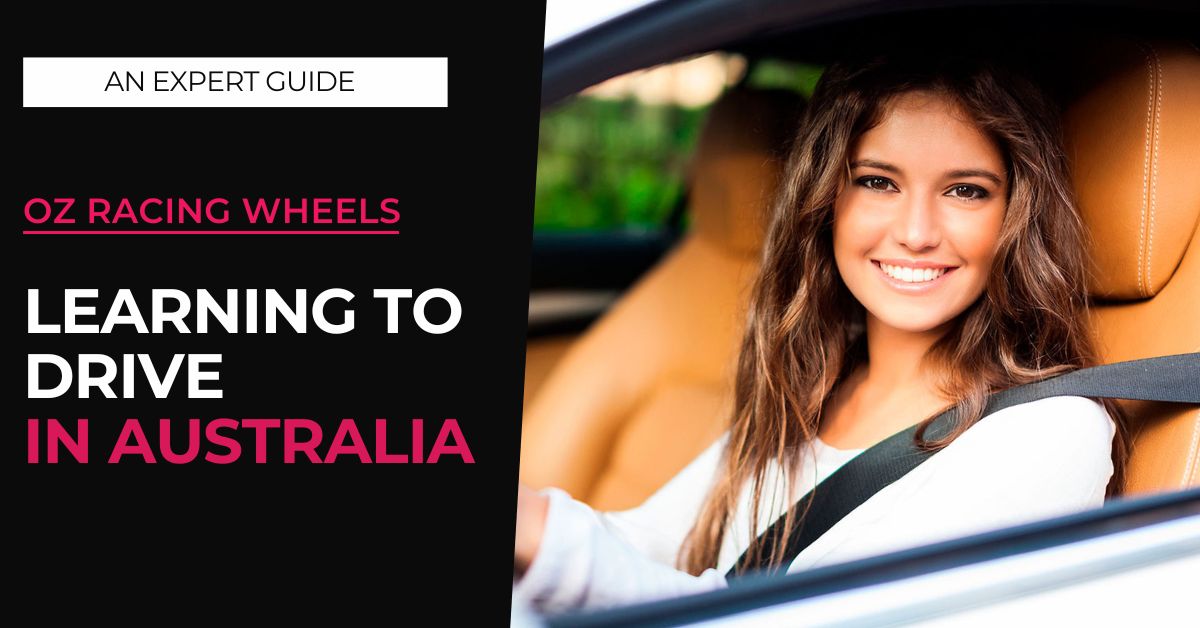As an experienced driver in many shapes and forms, from off-roading across dangerous Australian terrain, through raging bushfires (I’m not kidding!), to ragging Ferrari’s around a track, I appreciate the scariest part of driving is when you first take a car out onto Australian urban roads.
Learning to drive a car should be one of the most exciting times of your life – your gateway to freedom – yet all of your friends and schoolmates will go through the same fear and challenges you’re feeling right now.
So the best thing you can do is get over those challenges, and learn to drive faster and smarter than your peers!
In this guide to learning to drive in Australia, I’ll share with you my decades of driving wisdom, and help you find the easy path to feeling confident driving on Australian roads.
Start your engines!
Confidence is Key!
We are all capable of driving a car. It’s not as hard as it sounds.
A lack of confidence is what prevents all of us from learning to drive a car easily, and there are a few ways you can build confidence:
- Breathing techniques! – Feeling anxious is normal, so learning breathing techniques – even from YouTube, a Zen App, or even your Apple Watch, can help you feel a little bit calmer before going out in a car.
- Practice practice practice – I’ll tell you what made me a great driver shortly, but I failed hopelessly at learning to snowboard. In my class of 10 I was by far the worst, falling over, crashing into trees and people, and looking a right mess. It didn’t stop me, and with persistence I became an excellent snowboarder – far better than my classmates and snow-loving friends. I’ll tell you how you can practice below.
- A good teacher – You may assume any driving instructor is good for the job, but this is totally wrong. There are lots of bad driving instructors, or even driving instructors who don’t gel very well with yourself. Finding a great driving instructor is a must, and reading reviews or seeking recommendations is a good start, but never be ashamed to dump one instructor for another if you feel it isn’t working.
Quick fire tips on practicing your driving
If at the moment the thought of driving a car is on par with flying a UFO, then don’t worry. From where you are now to feeling confident in a car is just a matter of time.
The only issue with time, when it comes to learning to drive, is money.
Driving lessons cost a lot, especially if you need more time to learn than others. If you feel this is you, there are other options you can investigate:
- You do not need a licence to drive a vehicle on private land. You don’t even need a road legal car. Finding private land to learn to drive on is easier than you may think, so it’s worth considering local farms, industrial yards, or even designated off-road areas, and convincing an adult to teach you for free. You must seek permission to drive on private land, but it is a fantastic way to learn without the pressure of Australian roads and other drivers. I was fortunate to have access to a disused airfield, and I learned the basics of driving when I was 14 – this put me in great stead to learn to drive.
- Go-karts are a great and fun way to learn confidence in a vehicle – You will find go-kart centres all over the place, both indoors and outdoors, and these are a great way to learn how to accelerate, decelerate, and take corners efficiently, without having to worry too much about hitting others. The other great thing about go karts is you can start familiarising yourself with a vehicle as a minor, way before the government will let you learn on the roads. Anyone can go go-karting, so it’s a fun activity for girls too, not just petrol head boys. If you can afford it, visit your nearest track – most offer driver experience days, so ask if they do a passenger experience.
- Play a driving simulator or driving game – I realise computer games aren’t for everyone, but these days there are excellent driving simulators which will help you familiarise yourself with driving. Apart from the initial outlay, you can spend many hours on a driving simulator for free.
- Watch and observe others – Most of us spend half our lives in a vehicle, and as a teenager you’ll be shuttled around often by your parents (which you should thank them for!). Watch how they drive, ask for tips, and learn how others handle a vehicle. Ask questions!
- Know the rules of the road – Studying the rules of the road, even before you get in a car, are a great way to feel like you know what you’re doing. This is a much better technique in all cases, as otherwise you’re faced with information overload on driving lesson number 1. If you know the rules of the road before you start forking out money on driving lessons, you’re already half way to feeling like a pro.
- Book driving lessons (and your driving test) during off-peak hours – There’s nothing worse than feeling panicked when learning to drive a car, so do yourself a favour and book your lessons when the roads are quiet. Only fools take driving lessons during rush hour, even though your driving instructor will be happy to take your money at these times.
- Set achievable goals – Try not to feel the pressure of time, even if you’re longing for four-wheel freedom. A good driving instructor will help you do this, but focusing on one aspect of driving at a time is better than being mentally overloaded. Feel comfortable accelerating and braking before you tackle anything else. You will not succeed at anything if you’re afraid you can’t stop, so feeling comfortable braking, or emergency braking, is your key to success.
- Visualise your driving – You may panic on a lesson, but you are still learning. Spend time later than evening, when you’re at home relaxed, and visualise your driving. Soak up all the information you have learned during your lesson, and repeat it visually in your mind. This will help it feel like second nature the next time you have a lesson.
Your learning to drive questions answered by an expert
When we first set foot (or backside) in a car we’re faced with many unknowns. Is it easier to learn in an automatic, or should we go the whole hog and learn in a manual? How should we find a good driving instructor or driving school, and what should we watch out for?
Below you will find further resources to help you learn how to drive, and answer all your questions:
- How to choose a good driving instructor (or driving school)
- How to pass your driving test – expert tips
Final thoughts about learning to drive in Australia?
With a level head, positive attitude, and good preparation, learning to drive in Australia can be a fun and rewarding experience rather than a hair-raising rollercoaster of fear.
What experiences have you had learning to drive, or what fears and questions do you have? Let me know in the comments!








